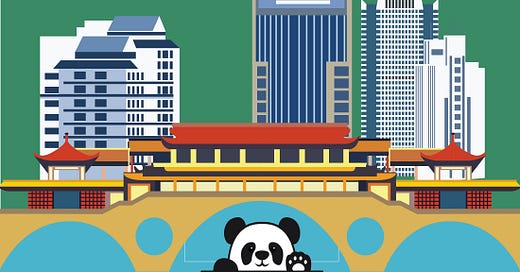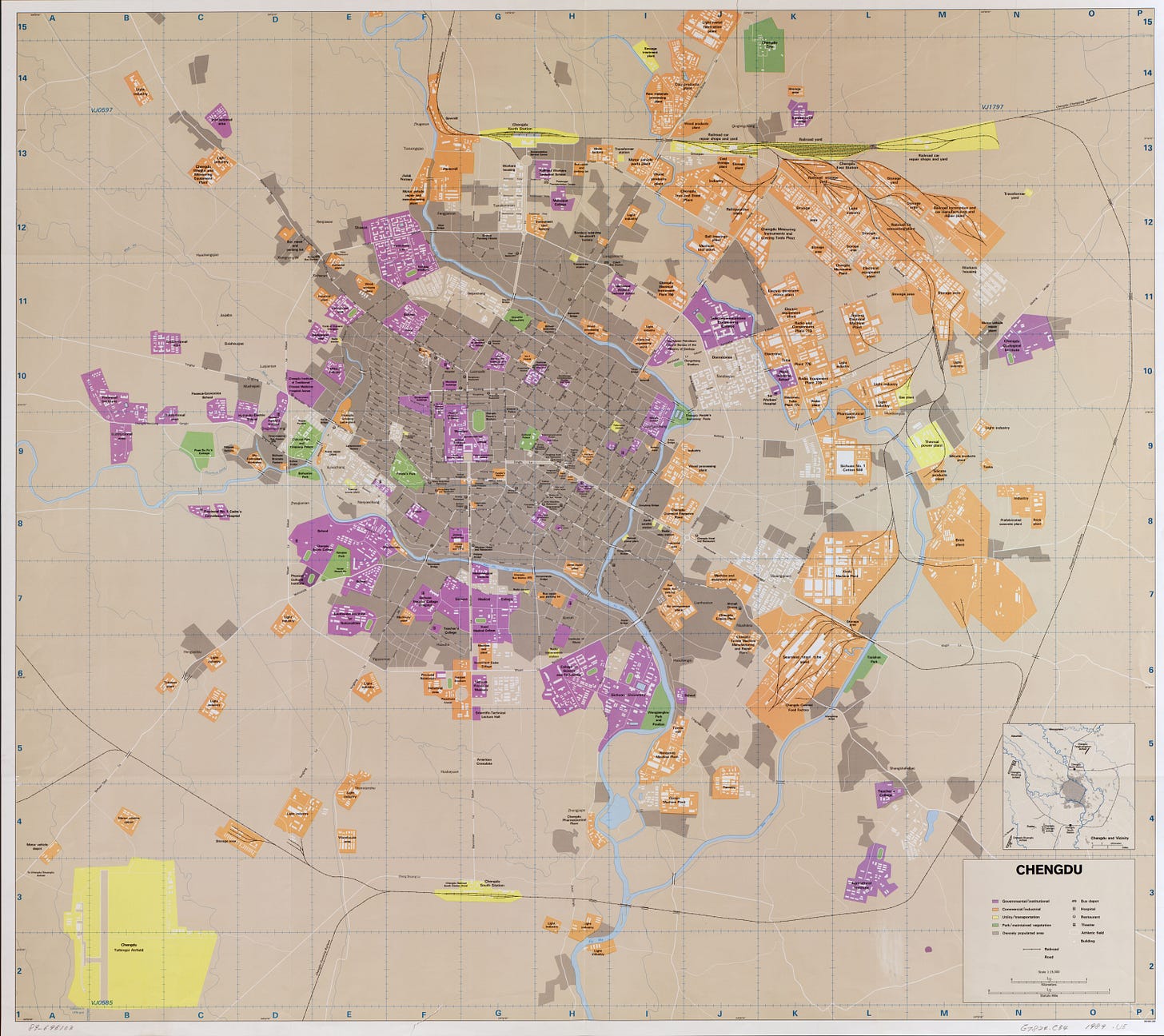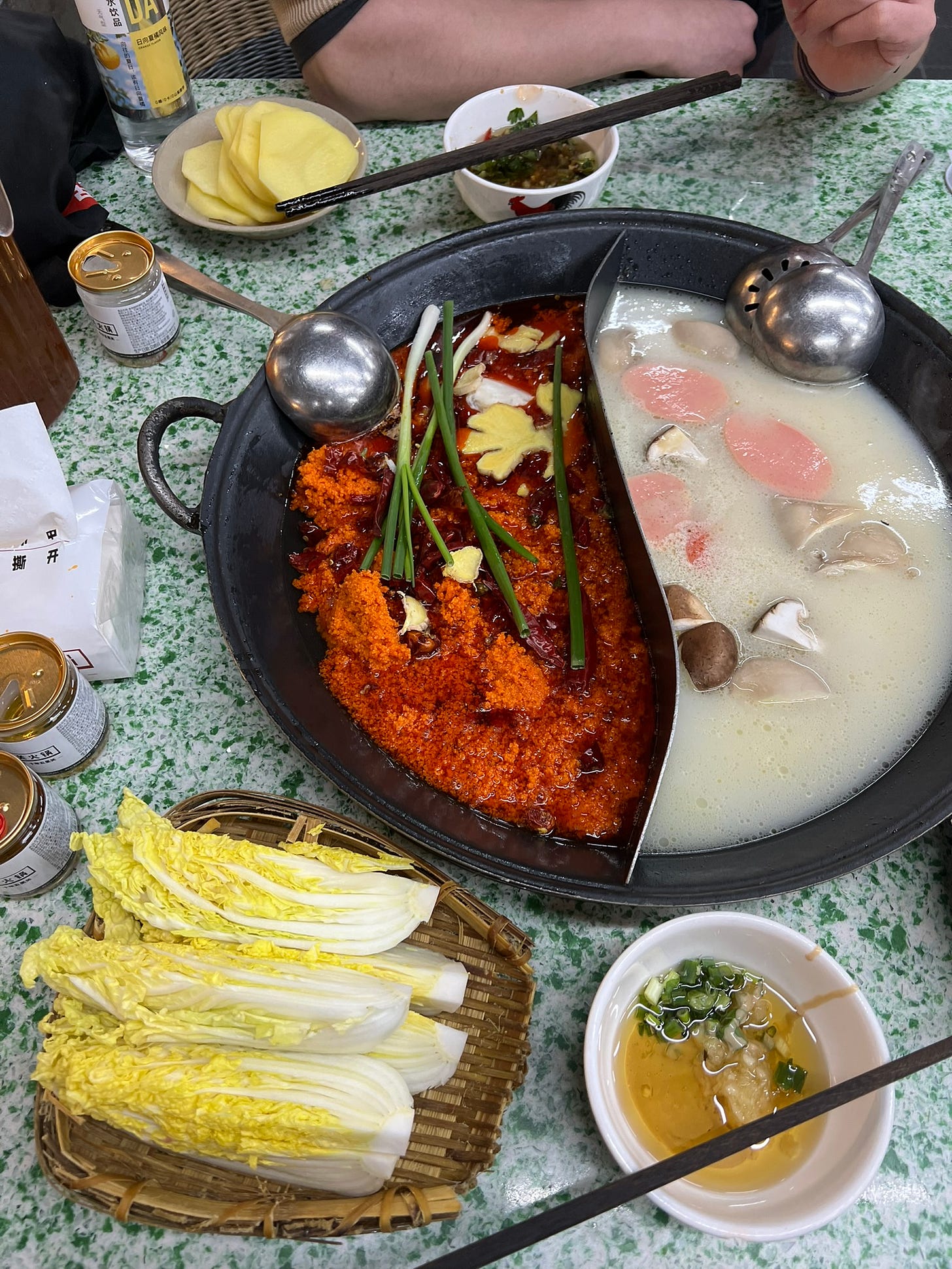City REPORT: Chengdu 成都
A visit to China's buzzing southwestern metropolis. Chengdu may have a reputation for cuddly Pandas and spicy hotpot, but it also packs a serious economic punch.
The Rise of Chengdu? China’s Western powerhouse…
Chengdu has a reputation for being a relaxed fun-loving city, with residents whiling away their weekends chatting and playing cards in teahouses. Oh, and did I mention pandas? If you forgot Chengdu was the home of giant pandas, you will have plenty of opportunities in the city to be reminded— giant stuffed mascots are plopped in front of trendy stores, and many tourist stands sell nothing but Panda plushies of various sizes and positions. If the pandas knew how much revenue the city made from their image they would surely demand royalties—but they’re too busy sleeping and eating bamboo all day.
Of course, Chengdu is not all teahouses and pandas. It’s the 4th largest city in China and has become an economic engine of Western China and a contender to become the first “first tier” city in inland China. What is driving the rise of Chengdu? A recent Economist article highlighted it in a short report on inland Chinese cities—they’re cheaper and have a more relaxed pace of life than in Beijing, Shanghai, or Shenzhen. 1 The “hibiscus city” 蓉城 (a nickname of Chengdu) has long been known as a socially tolerant and open city—with one of China’s hottest gay scenes (earning the nickname Gay Du). So the city’s quality of life is not unrelated to its economic attraction—amidst the prioritization of human capital and creative industries, urban quality of life is a major competitive advantage.2 It’s something that puts Chengdu ahead of Zhengzhou and probably Wuhan in the race for attracting talent among inland cities. But “soft power” alone also doesn’t fully explain the rise of Chengdu.
Don’t be fooled by cuddly pandas and buzzing gay bars, Chengdu also owes its economic rise partly to its role as a hub for defense industries and central state capital in Western China.
Don’t be fooled by cuddly pandas and buzzing gay bars, Chengdu also owes its economic rise to its role as a hub for defense industries and central state capital in Western China. Chengdu is the HQ of the PLA’s Western Theater Command, formerly the Chengdu Military Region. Chengdu Aircraft Industry Group (CAIG) is one of China’s leading military aircraft manufacturers, and currently developing some of China’s next-gen stealth fighter jets.3 A businessmen I spoke with recently working on the “low-altitude economy” (drones and autonomous flying vehicles) noted the tight restrictions of the military on airspace around Chengdu as a key obstacle to growth in this emerging sector. But the importance of Chengdu to the military and defense means the city is a major focal point of central investment.
As a recent article writes, “With a comfortable coat on the outside and a fighting spirit on the inside, Chengdu has always had two sides: the city of comfort and the city of striving. Just like the two sides of Chengdu, comfort is the high-profile A side, and fighting is the low-key B side. And all the comfort comes from fighting.”4
Compared to the also bustling metropolis of Chongqing, Chengdu is the political and cultural capital of the region, whereas Chongqing has long been a riverine port, manufacturing hub, and logistics center. Chongqing was separated from Sichuan in 1997 to create the fourth “directly ruled municipality” or 直辖市, making Chongqing functionally equivalent to a province. The more direct comparison for Chengdu would be Xi’an: a historic capital, a provincial capital, and a center of universities and defense-related industries. Chongqing may have also fallen out of favor during the Xi Jinping years due to its association with Xi’s former rival Bo Xilai 薄熙来, the former Party Secretary of Chongqing who built up a power base in the Southwestern city before being sacked and arrested in a high-profile scandal that paved the way for Xi’s rise to power in 2012. When asking a Chengdu local to compare the two cities, he told me, “Chongqing hot pot is spicier than Chengdu hot pot, the people are spicier, and the landscape is more dramatic with mountains and narrow buildings. Chengdu people are more 温和 wenhe- (mild).” Despite this competition between the two, official policy is now aiming for the “Chengdu-Chongqing Economic Circle” 成渝城市圈 to more closely integrate the two into a 城市群, on par with the three coastal city clusters (JingJin Ji, Changsan Jiao, Zhusanjiao). One example of this is Chengdu’s new Tianfu International Airport and airport city, located far to the Southwest of the city,
Chengdu Teahouses as a “third space” and “public sphere”?
I hadn’t been to Chengdu since 2009, the first time I ever came to China as an exchange student. One place I wanted to revisit was People’s Park 人民公园 in the center of the city with its famous lakefront teahouse, Heming Tea House 鹤鸣茶社. While Chengdu had transformed in the 15 years since I first saw it, this famous “cultural landscape” had hardly changed at all. On a warm Saturday it was thronged with locals drinking tea, playing cards, and gossiping. I couldn’t find a table in the main lakefront area so I had to pay 50RMB to watch a Sichuan opera performance in a sectioned off area. People’s Park Teahouse is a prime example of the kinds of “third places”5 that are increasingly disappearing in cities around the world due to the rise of teleworking, homogenization of malls, and the decline in socializing among Gen Z youth (particularly in the U.S.) Chengdu’s teahouse seemed to attract all ages—the young, old, families alike.
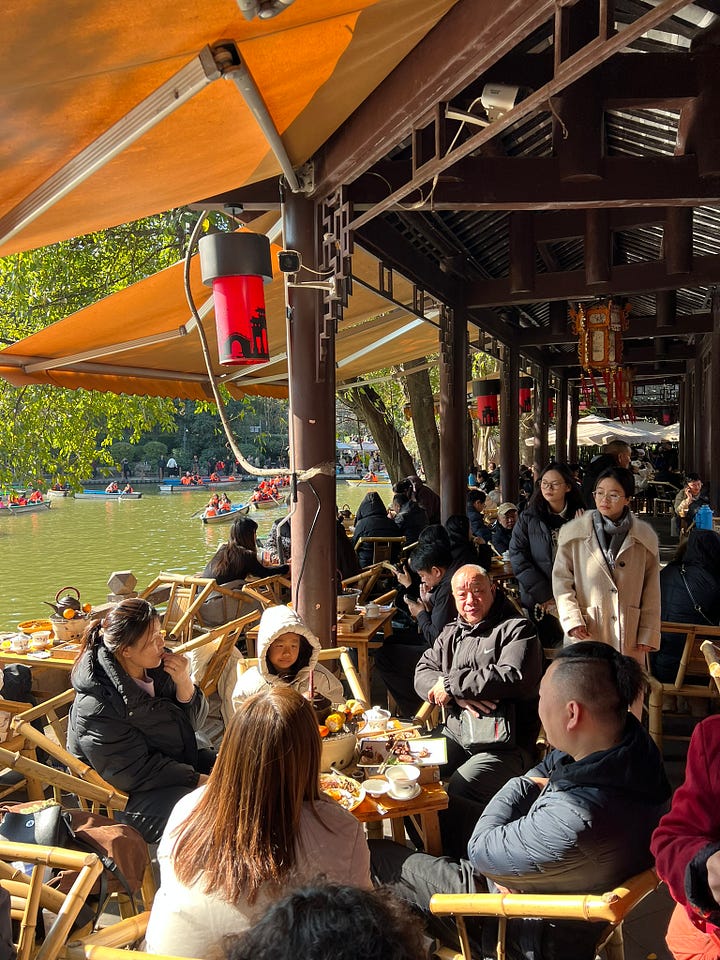
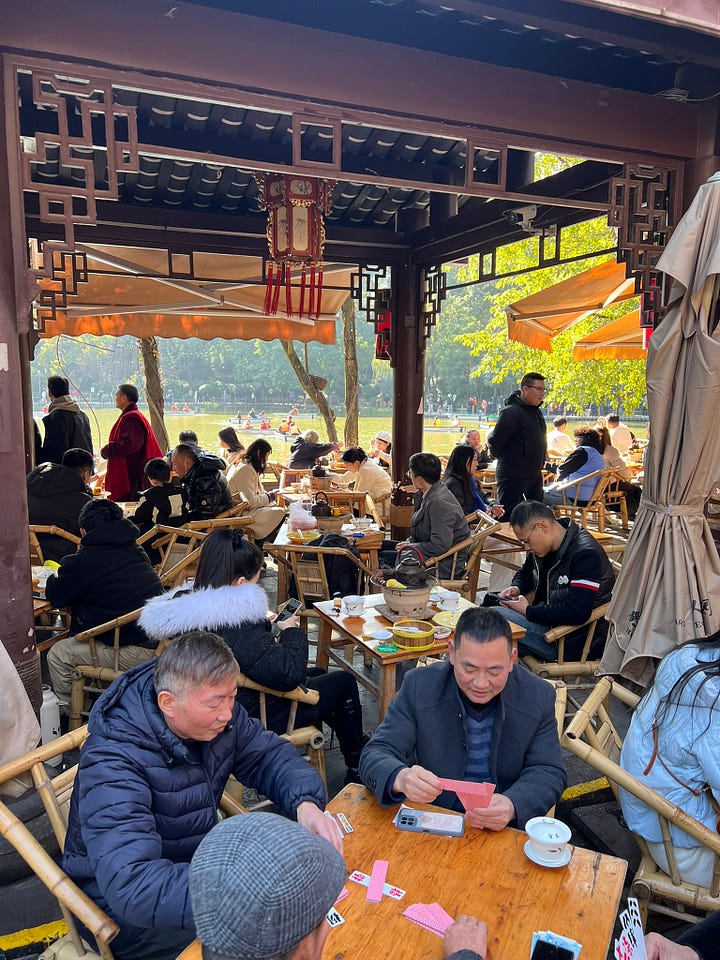
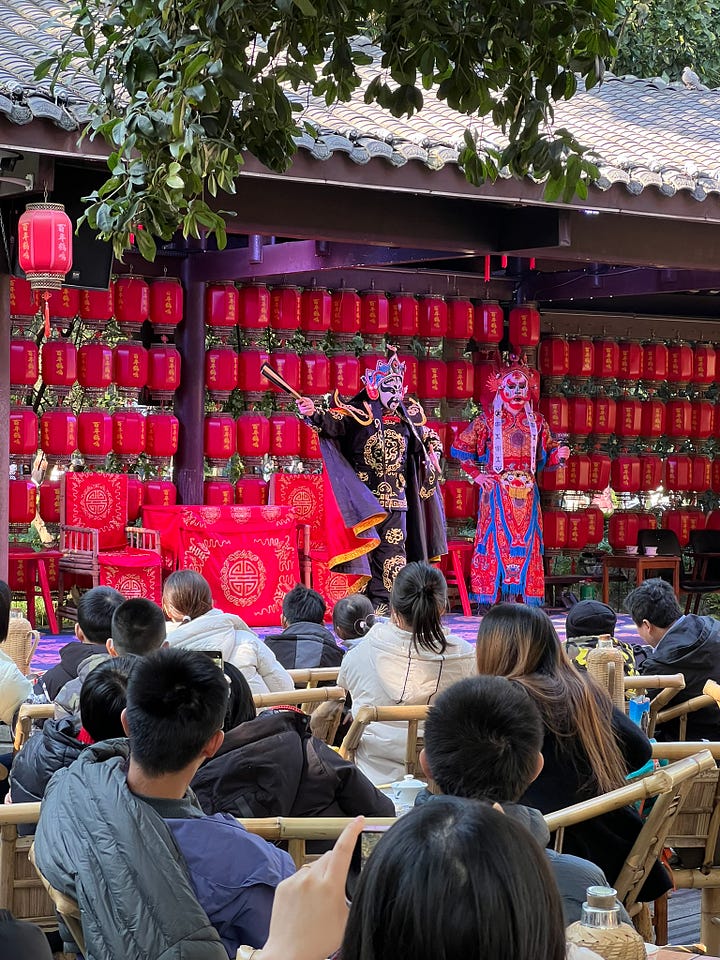


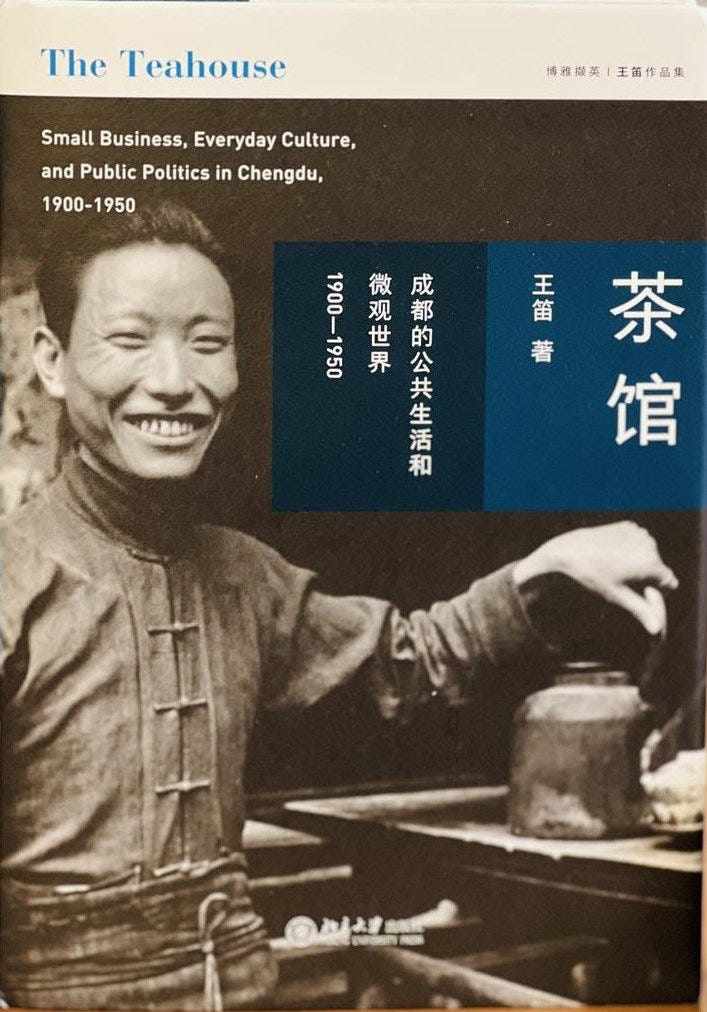
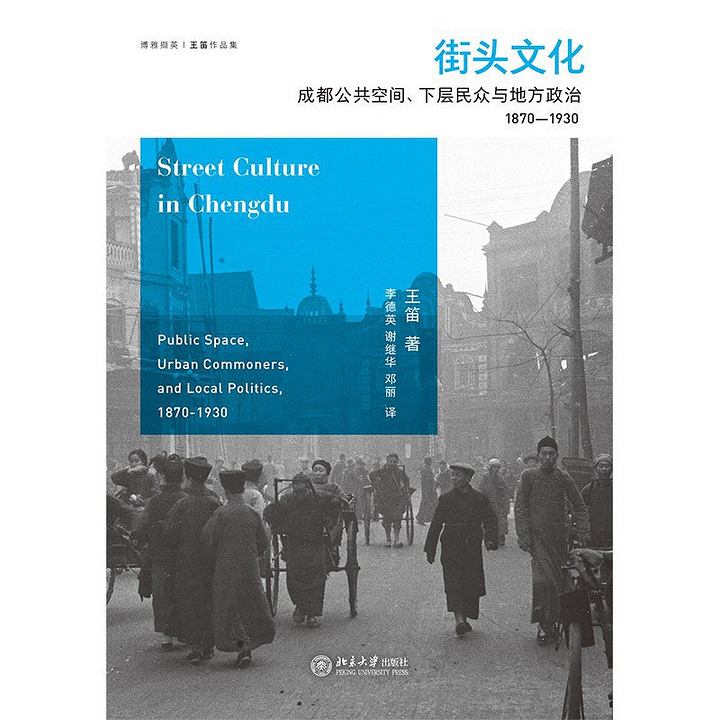

Chengdu: Legacy of the Planned Economy
Like many Chinese cities, the 1950s and 60s saw a reorganization of urban space to suit the ideology and needs of the planned economy. Outside the old city, factory districts were developed on the periphery of Chengdu—a pattern also observed in many other historic Chinese cities like Xi’an. A 1989 CIA map of Chengdu shows major industries in Chengdu (orange) as well as core urban areas (grey), and educational and other public facilities (purple). The map gives an idea of where some of the main industrial areas were located (in the Northeast of the city). According to Julie Miao, the most important factories located in the Northeast of the city due to favorable winds, and higher elevation.6 Factories such as the state-run Hongguang Electronic Tube Factory that made cathode ray tubes for TVs and other electronic devices were some of the city’s important industrial anchors. Today, one of these factories was turned into a new cultural space: Eastern Suburb Memory 东郊记忆—Chengdu’s version of Beijing’s 798. Today, Chengdu is a much more diversified economy. The Hi-Tech Zone was set up in 1988 as one of the first in the country. Chengdu is also the largest financial center in Western China. It has also attracted significant foreign investment over the years, with companies like IBM, Samsung, and SAP. As recently as 2017, IBM was trying to open a semiconductor factory in Chengdu7, although IBM recently announced plans to layoff and downsize its research and investment in China.8
COSMO: Youth Fashion
While I’m hardly a fashionista, a friend recommended me to visit COSMO to see some unique local brands. I enjoyed it much more than visiting a generic mall, as most of the shops were selling domestic brands you wouldn’t find elsewhere.
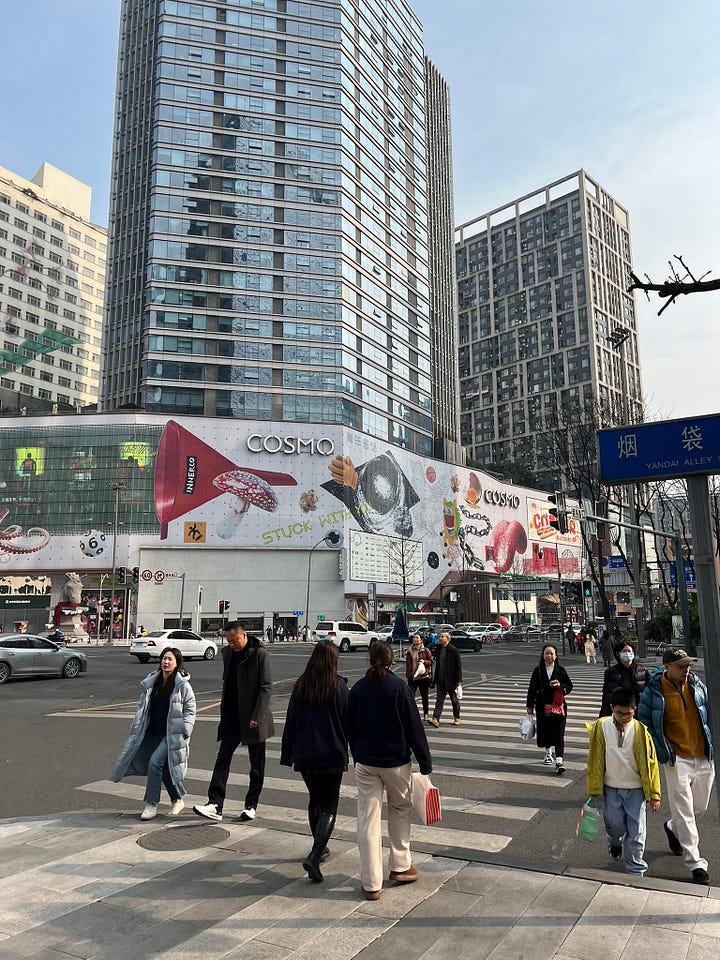



Hotpot
No trip to Chengdu would be complete without hotpot. A local friend recommended this place: Wuliguan Hotpot 五里关火锅, located in a residential area just north of the main shopping area around Chunxi Lu 春熙路. The area itself was interesting to explore as a small-scale down to earth neighborhood of restaurants, bars, and small shops mostly occupying old housing blocks. This area is within the northern walls of the former old city. The hotpot was spicy, but the best part for me was the oil—served in small canisters that you grabbed at the spice station. No foreigners seen here except me—always a good sign :-).
New Chengdu: Tianfu New Area and Science City
Chengdu had grown significantly since the first time I had visited in 2009. Much of this growth has taken place in the suburbs, and particularly in a narrow corridor stretching South of the city center. The Chengdu High Tech Industrial Development Zone was opened in 1988 as one of China’s earliest high-tech parks. Further to the south of this, the Tianfu New Area 天府新区 was incorporated in 2011. Many of Chengdu’s’ new industrial and office parks and high-end housing developments have clustered along this north-south corridor along subway lines 1 and 18. Chengdu Tianfu Airport opened as the city’s second international airport, and is located to the SW of the city, an hour subway ride from Chengdu South Railway Station. I briefly visited the Chengdu Science City 成都科学城 development which is located at the far southern end of Subway Line 1. I was particularly interested in seeing a dazzling “Supercomputing Data Center”, although I was quickly told to leave by security guards after ambling inside the landscaped pathway that wound through it. Hey I just thought it was a park, take it easy…Unlike the earlier developments just to its north, the Science City Area is almost entirely dominated by state capital—research institutes of China Railway, Chinese Academy of Sciences, and other SOEs, and housing developments built by state-owned enterprises China Communications and China Rail Construction.
Despite China’s real estate downturn, Chengdu remains a desirable location in China. The quality of life makes it attractive for liberal-minded youth from coastal cities who want a cheaper cost of living without sacrificing culture, amenities, and high-tech jobs. Chengdu Science City has received significant investment from major central enterprises and research institutes—a branch of the China Academy of sciences is located here, along with a research institute of the China-Tibet Railway and other SOE projects.

https://www.economist.com/podcasts/2024/07/09/whats-behind-the-rise-of-chinas-second-tier-cities
Florida, Richard. Cities and the Creative Class. New York: Routledge, 2004. https://doi.org/10.4324/9780203997673.
https://aerospaceglobalnews.com/news/new-chengdu-combat-air-platform-debuts-on-maos-birthday/
成都新春经济之花,为何面朝大湾区? ( 蓉平) January 17, 2025 https://mp.weixin.qq.com/s/hZy_q29bhudZK-lJJg86Mw
Oldenburg, Ray. The Great Good Place: Cafes, Coffee Shops, Bookstores, Bars, Hair Salons, and Other Hangouts at the Heart of a Community. Hachette Books, 1999.
Miao, Julie T. 2019. “Planning Particularities: Reinterpreting Urban Planning in China with the Case of Chengdu.” Planning Theory & Practice 20 (4): 512–36. doi:10.1080/14649357.2019.1646923.
https://www.nytimes.com/2017/02/10/business/china-computer-chips-globalfoundries-investment.html
https://executivegov.com/2024/08/ibm-china-ops-closing/


